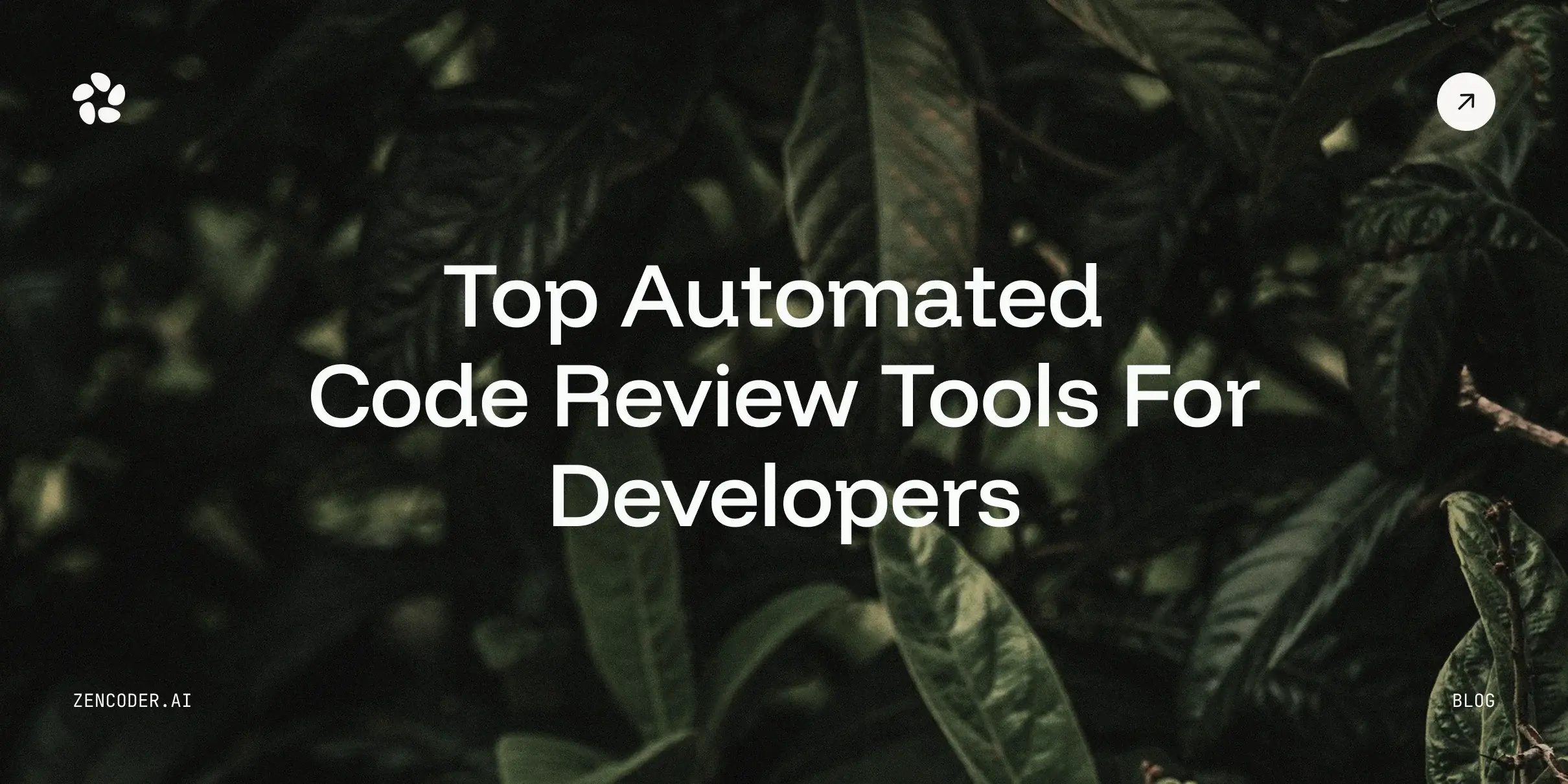Autonomous coding agents are reshaping software development by taking over repetitive tasks and giving engineers more time for creative, high-level work. As AI becomes more advanced, these agents can plan, write, test, and debug code with minimal input, making them one of the most powerful tools emerging in modern development.
In this article, we’ll explore how these agents are reshaping development, how they operate, and the significant challenges they encounter along the way.
Key Takeaways
- Autonomous coding agents go beyond AI assistants
Unlike traditional AI coding tools that only suggest snippets, AI software agents can handle end-to-end workflows. This independence makes them capable of handling full workflows, not just isolated tasks.
- They accelerate development and improve code quality
By automating repetitive tasks, autonomous agents accelerate delivery timelines and minimize human error. They also enforce standards, detect inefficiencies, and refine code, which leads to cleaner, more reliable software.
- Adoption comes with risks and challenges
Organizations must account for potential reliability issues, security vulnerabilities, and integration complexity. Oversight is still required to ensure that the generated code aligns with business goals, architecture, and compliance requirements.
- They adapt and improve over time
Autonomous agents continuously learn from test results, user feedback, and production data. This means their performance and decision-making get better with each project, making them increasingly valuable for long-term development.
- Zencoder makes autonomous coding practical at scale
If you want to implement autonomous agents without the overhead of building from scratch, Zencoder integrates directly into your CI/CD pipelines. It automates bug fixing, refactoring, security patching, and test generation—helping your team ship faster while reducing technical debt.
What is an Autonomous Coding Agent?
An autonomous coding agent is a type of AI that can write, test, and refine code with minimal human input. Instead of waiting for step-by-step instructions, it takes a high-level goal and figures out the smaller tasks it needs to complete along the way. It can execute coding tasks from start to finish.
Unlike traditional coding tools or rule-based programs, they can adapt to changing requirements and unexpected challenges.
Where they help today
- Automating repetitive coding work
- Optimizing existing codebases
- Prototyping new features quickly
- Assisting with debugging and testing
- Keeping documentation up to date
Benefits of Using Autonomous Coding Agents
Integrating autonomous software agents into development workflows can deliver significant value for both engineering teams and organizations:
🔵 Accelerated development velocity – Agents autonomously generate, test, and refine code, significantly reducing the time spent on repetitive tasks.
🔵 Quicker product delivery – By streamlining coding and debugging, agents shorten development cycles and enable faster releases.
🔵 Improved code reliability and consistency – Autonomous AI agents follow standards, detect inefficiencies, and correct errors to produce cleaner, maintainable code.
🔵 Greater focus on strategic and creative work – Developers can redirect effort toward architecture, optimization, and innovation instead of routine coding.
🔵 Scalable and continuous development capacity – Agents operate independently, handle multiple tasks simultaneously, and adapt to evolving requirements.
🔵 Expanded accessibility and skill development – They simplify coding for beginners while helping experienced developers explore new techniques.
AI Coding Agents vs. Autonomous Coding Agents
AI coding agents and autonomous coding agents both use AI to assist with software development, but the level of independence sets them apart.
- AI coding agents are designed to work closely with developers. They provide suggestions, generate snippets, and help debug, but still require a human to guide the process, approve changes, and integrate code.
- Autonomous agents go a step further. They can plan, write, test, and even deploy code with minimal human input, handling multiple steps of the software development lifecycle in sequence.
Here are the key differences:
|
Feature |
AI Coding Agents |
Autonomous Coding Agents |
|
Human involvement |
Require constant input. Developers prompt, approve, and integrate code |
Minimal input. Developers set goals, agents handle execution |
|
Task handling |
Suggest or generate code snippets for specific problems |
It can cover the full software lifecycle in multi-step workflows |
|
Role in development |
Coding assistant that boosts productivity |
Independent coding collaborator that reduces manual workload |
|
Learning & decision-making |
Learn patterns and suggest based on context, but rely on human oversight |
Make design choices, resolve errors, and adapt code on their own |
|
Use case |
Best for accelerating coding tasks and supporting human developers |
Best for automating repetitive coding, maintenance, or entire features |
How do Autonomous Coding Agents Work?
Autonomous coding agents combine natural language processing, program synthesis, and automated testing to generate, refine, and maintain software with minimal human oversight.

Their workflow can be broken into clear stages:
🟢 Stage 1: Understanding the Problem
The process begins when the agent receives a task, usually framed in natural language or as part of a project requirement. The agent interprets this input and breaks it down into actionable coding objectives. For example, a simple instruction like “build a login system with password reset” is mapped into sub-tasks such as database handling, authentication logic, and email integration. This translation step is crucial for aligning the agent’s output with the developer’s or organization’s actual goals.
🟢 Step 2: Context Gathering and Integration
Next, the agent studies the environment in which it will operate. It may read through existing repositories, analyze project structure, review dependencies, and check available APIs or documentation. By understanding the broader system, the agent avoids generating isolated snippets of code that won’t integrate well. Instead, it ensures compatibility and consistency with the overall architecture, coding standards, and tools already in place.
🟢 Step 3: Code Generation and Decision-Making
With the requirements and context clear, the agent begins generating code. It draws on large-scale training in programming languages, libraries, and frameworks to select the most suitable approach. This includes making design decisions such as:
- Whether to use a built-in library or an external dependency
- Which algorithms are most efficient
- What coding patterns best fit the situation
🟢 Step 4: Execution, Testing, and Debugging
Once code has been generated, the agent tests it in a controlled environment. This might include running unit tests, integration tests, or simulations of user behavior. If the code fails, the agent doesn’t simply stop. It diagnoses the issue, traces the error back to its source, and regenerates or patches the code automatically. This iterative test–fix cycle helps the agent converge on a working solution without requiring constant human input.
🟢 Step 5: Validation and Safety Checks
Beyond confirming functionality, high-quality code must also be safe, efficient, and maintainable. At this stage, the agent applies validation techniques such as static code analysis, security vulnerability scanning, and performance profiling. It may also enforce style guides or organizational standards to ensure that its output can be trusted in real-world deployments. This step reduces risks and improves the long-term reliability of the generated software.
🟢 Step 6: Collaboration and Handoff
Since AI software agents are designed to augment developers rather than replace them, they prepare outputs in ways that facilitate collaboration. This might mean writing clear inline documentation, summarizing design choices, or packaging updates as pull requests for review in version control systems.
🟢 Step 7: Learning and Adaptation
Finally, these agents learn from experience. They adapt based on:
- test outcomes
- user corrections
- production feedback
- evolving best practices
Over time, this feedback loop allows the agent to refine its coding style, improve debugging efficiency, and take on increasingly complex development challenges. In some systems, reinforcement learning is used to reward strategies that lead to faster or more reliable solutions.
Key Challenges to Watch For
While these repo-level AI agents bring significant benefits, their adoption also introduces technical, security, integration, and ethical challenges that organizations must anticipate and address early to maximize value and minimize risks:
🔴 Reliability and Trust
Although agents can produce functional code quickly, there is no guarantee that the output will remain stable when deployed in real-world environments. Code that passes initial tests may still fail under heavy usage, complex dependencies, or edge cases, raising concerns about reliability and long-term safety.
🔴 Security Vulnerabilities
Autonomous agents make independent coding decisions that can inadvertently introduce flaws, unsafe practices, or overlooked compliance requirements. This increases the likelihood of exploitable vulnerabilities slipping into production systems, potentially undermining user trust and regulatory compliance.
🔴 Integration Complexity
Even when the generated code is functional, integrating it into large, pre-existing systems is rarely straightforward. Autonomous agents may not fully account for architectural nuances, legacy code constraints, or organizational standards, which means human developers must often step in to adjust or refactor.
🔴 Limited Contextual Understanding
While advanced, these agents still struggle with nuanced business logic or ambiguous requirements. Misinterpretation of project goals can lead to implementations that technically work but fail to align with the intended user experience, product vision, or operational constraints.
🔴 Oversight and Accountability
When much of the work is completed autonomously, assigning responsibility for bugs, failures, or poor design choices becomes more complex. This lack of clear accountability can complicate project management, auditing, and client communication.
🔴 Ethical and Workforce Considerations
Overreliance on autonomous agents raises broader concerns about the future of human developers. There is a risk of deskilling the workforce, reducing opportunities for junior developers to learn, and creating uncertainty about human control over critical design and decision-making processes.
Best AI Software Agents to Try
To successfully automate coding tasks at scale, it’s essential to select an autonomous agent that not only fits seamlessly into your workflow but also delivers reliability, adaptability, and measurable impact. Below, we’ve picked 3 of the best autonomous coding solutions to streamline development, boost productivity, and handle complex engineering tasks with minimal oversight.
1. Zencoder

Zencoder integrates directly into CI/CD pipelines to automate bug fixing, code reviews, refactoring, and testing. Its Repo Grokking™ technology gives agents a deep understanding of your codebase, while tools like Zentester automatically adapt tests as your code evolves. With enterprise-grade security, customizable Zen Agents, and multi-repo search, Zencoder integrates seamlessly into existing workflows to accelerate development without compromising quality.
2. GitHub Copilot

Copilot goes beyond smart suggestions with its new Agent Mode, which can autonomously plan, write, test, and even submit code. Running in the background, it tackles assigned issues, drafts pull requests, and leverages full project context, code, discussions, and even images, to deliver relevant solutions. Additionally, it respects branch protection rules and requires human approvals, making it a reliable AI teammate inside your IDE.
3. Devin

Devin is designed for high-effort engineering work at scale, like large refactors and codebase migrations. It executes tasks autonomously, learns from examples with few-shot adaptation, and even builds its own tools to speed up repetitive sub-steps. Over time, Devin compounds its performance by avoiding past mistakes, making it ideal for organizations tackling complex, repetitive, or large-scale development challenges.
Accelerate Delivery With Zencoder Autonomous Agents
Zencoder integrates seamlessly into your CI/CD pipelines to automate critical engineering tasks, such as bug fixing, code reviews, refactoring, and test generation, removing bottlenecks and enabling teams to deliver faster with greater confidence.
How It Works
Deploy autonomous AI agents in your CI environment in under 5 minutes:
🟢 Step 1: Configure Your Agent – Use the Zencoder CLI to define agent behavior. Whether fixing bugs, reviewing PRs, enforcing localization, or patching vulnerabilities, agents are version-controlled and scoped through customizable parameters. Each configuration generates a unique, secure webhook endpoint for execution.
🟢 Step 2: Integrate with Your CI/CD Pipeline – Connect seamlessly with GitHub Actions using Zencoder’s official integration. Secure workflows by generating API credentials in the admin console and storing them as encrypted secrets in your repository.
🟢 Step 3: Automate with Webhooks – Link agents to GitHub, Jira, Linear, or internal systems. Agents instantly respond to webhook events, process contextual payloads, and take intelligent, autonomous actions—without manual input.

Here are the key capabilities of Zencoder Autonomous Agents:
- Automated Bug Fixing – Identify and resolve issues tied to Jira or Linear tickets without developer intervention, reducing triage time and accelerating resolution.
- Internationalization (i18n) Enforcement – Ensure consistent localization across the codebase, automatically catching missing translations and enforcing language standards.
- AI-Powered Code Review – Provide detailed, contextual feedback that goes beyond linting, flagging architectural issues, security concerns, and potential bugs with actionable suggestions.
- Automated Refactoring – Safely restructure legacy code, reduce technical debt, and improve maintainability while maintaining velocity.
- Test Suite Generation – Automatically generate unit, integration, and end-to-end tests based on your code and user flows to strengthen coverage and reliability.
- Continuous Documentation – Keep internal and external documentation aligned with code changes, with no manual effort required.
- Security Patch Automation – Detect and remediate vulnerabilities using the latest CVE data, applying fixes rapidly across your entire codebase.
Request early access to Zencoder's autonomous agent and automate CI/CD workflows in under five minutes!
FAQs:
What are the types of autonomous agents?
Autonomous agents come in several forms, depending on their design and purpose:
- Reactive agents respond directly to environmental inputs, without memory or planning.
- Deliberative agents reason and plan actions based on internal models of the world.
- Learning agents adapt and improve over time by using data or feedback.
- Hybrid agents combine quick reactions with planning or learning for greater versatility.
Where are autonomous coding agents mostly used?
Autonomous coding agents are primarily used in areas like software development, where they can generate boilerplate code, automate testing, and assist with bug fixing. They also play a key role in DevOps by managing deployments and continuous integration pipelines. Beyond that, they’re helpful in data science for writing scripts to process data and train models, and in cybersecurity, where they help monitor systems, apply patches, and even automate responses to threats.
Is autonomous coding completely human-free?
No, autonomous coding isn’t entirely free from human involvement. While these agents can independently complete many coding-related tasks, they still rely on humans to set goals, review their output for accuracy and security, and make higher-level decisions about design, ethics, and business priorities. In practice, autonomous coding works best as a partnership, with agents handling repetitive tasks and humans guiding the overall direction.






![12 Best DevOps Testing Tools for 2026 [Comparison List]](https://zencoder.ai/hubfs/Cover-Nov-18-2025-04-51-58-6612-PM.webp)